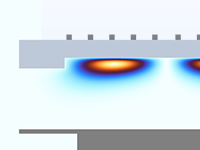
Inductively Coupled Plasmas
Investigate how power couples to the plasma in an ICP reactor.1
Model Low-Temperature Plasma Discharges
A plasma system involves multiple interacting physics phenomena that affect its behavior, including fluid mechanics, chemical reactions, physical kinetics, heat and mass transfer, and electromagnetics. The Plasma Module is a specialized add-on product to COMSOL Multiphysics® for modeling nonequilibrium and equilibrium discharges, which occur in a wide range of engineering disciplines. Developed to handle arbitrary systems, the Plasma Module provides predefined settings for modeling direct current (DC) discharges, inductively coupled plasmas (ICP), microwave plasmas, capacitively coupled plasmas (CCP), and corona discharges.
Contact COMSOL
Simulate the behavior of plasmas subject to a variety of electromagnetic excitations.

Investigate how power couples to the plasma in an ICP reactor.1
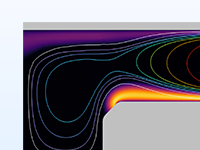
Model CCP reactors using a dedicated interface that directly solves the time-periodic steady state.
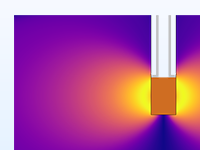
Couple a plasma model with magnetic fields and electromagnetic waves to model an ECR plasma source.1,2
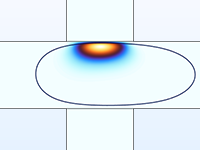
Investigate the effects of microwave heating in a plasma.2
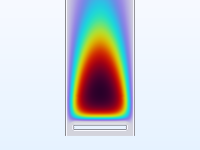
Simulate discharges sustained by a DC voltage or current.
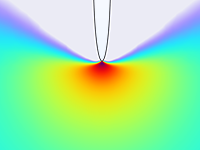
Compute the spatial distribution of charged species in corona discharges.
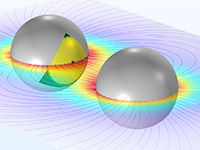
Detect if a high-voltage DC system can cause gas breakdown.
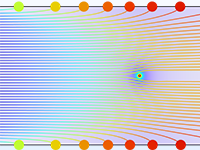
Track charged particle trajectories and compute the transmission probability of an electrostatic precipitator.3
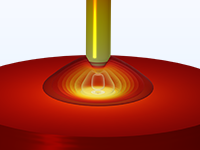
Simulate the temperature distribution in a plasma arc and surrounding materials.1
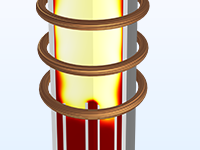
Investigate the electrical and thermal characteristics of an ICP torch at atmospheric pressure.1
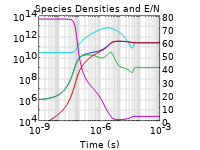
Model plasma reactors using global models for fast parameterizations and complex chemistries, including the Boltzmann equation.
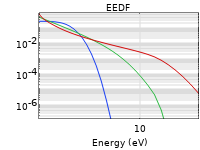
Compute EEDFs and obtain electron transport parameters and source terms for use in fluid plasma models.
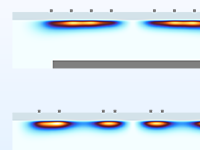
Optimize the coil design and positioning of an ICP reactor to obtain plasma uniformity.4
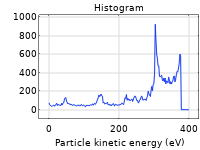
Compute the ion energy distribution function at surfaces.3
The Plasma Module provides specialized tools for modeling low-temperature and thermal plasmas.
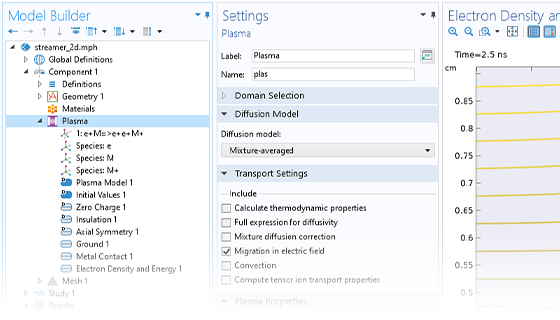
The Plasma Module provides built-in user interfaces for modeling low-temperature plasma reactors that are sustained by a static or time-varying electric field. These interfaces each define sets of domain equations, boundary conditions, initial conditions, predefined meshes, and predefined studies with solver settings for steady and transient analyses, as well as predefined plots and derived values. Transport equations for all species (electrons, ions, and neutrals) are solved self-consistently with Poisson's equation. The electrons' mean energy equation can also be solved by modeling how the electrons gain energy from the electric field and lose energy in collisions with the background gas.
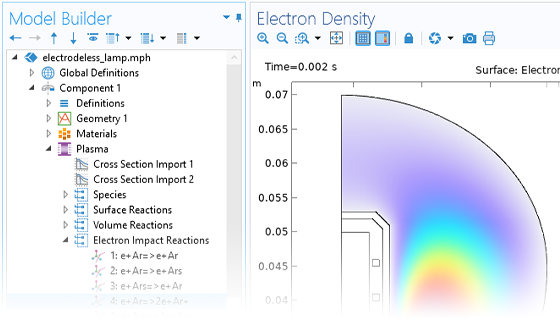
The plasma chemistry is extremely important for obtaining realistic simulation results. With the Plasma Module, you can define electron impact reactions, reactions between heavy species, and surface reactions.
The plasma chemistry dictates how electrons lose or gain energy in collisions with the background gas. The Plasma Module offers dedicated features for modeling electron impact reactions that can result in ionization, excitation, and attachment. Electron impact reactions can be defined from cross-section data, and source terms can be obtained by suitable integration over electron energy distribution functions.
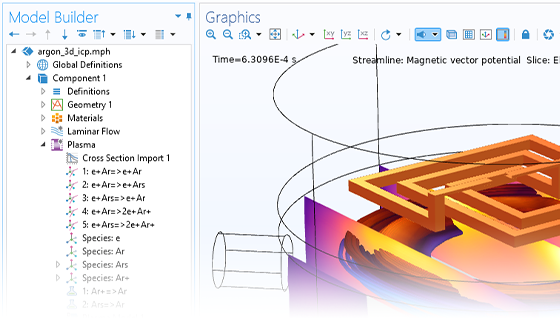
The Inductively Coupled Plasma multiphysics interface1 is used to study discharges that are sustained by induction currents. This multiphysics interface connects the plasma conductivity from the Plasma interface to the Magnetic Fields interface and couples the resulting electron heating due to the induction currents back to the Plasma interface. The magnetic field is solved for in the frequency domain and the plasma is solved for in the time domain.
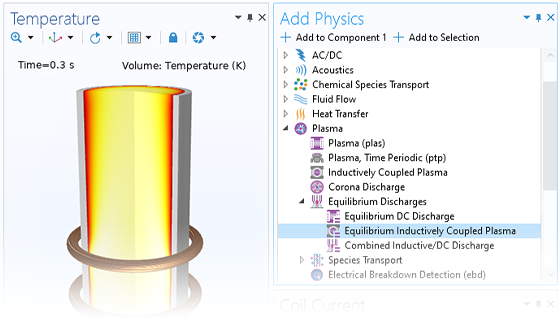
The Plasma Module includes interfaces for modeling plasmas in thermodynamic equilibrium. In thermodynamic equilibrium, electrons and heavy species have the same temperature and the plasma can be characterized by a single temperature. To model plasmas in such conditions, the Plasma Module offers several Equilibrium Discharge interfaces based on the type of electric excitation: Equilibrium DC Discharge, Equilibrium Inductively Coupled Plasma1, and Combined Inductive/DC Discharge1. These interfaces describe the plasma as a single fluid with one temperature in a magnetohydrodynamic approach. The Equilibrium Discharge interfaces couple fluid flow, heat transfer, magnetic fields, and electric currents interfaces. The plasma physics is introduced by multiphysics coupling features that incorporate specific heat sources into the fluid and via plasma properties, such as electric conductivity, heat capacitance, radiation heat transfer, and more.
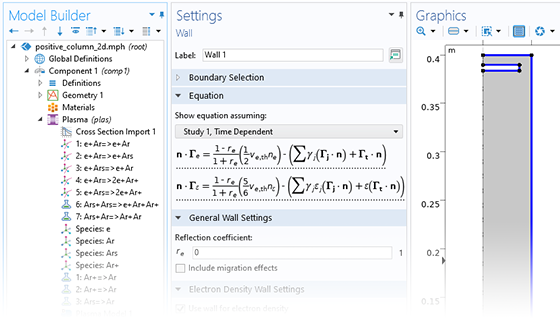
As a part of the built-in user interfaces within the Plasma Module, there are a variety of boundary conditions to describe how a plasma interacts with a surface. For example, electron density and energy fluxes at a surface are easily defined by applying the Wall feature. This feature introduces losses by transport to the electron transport equations. You can include additional flux sources like secondary electron emission and generic electron fluxes at a surface.
Fluxes of charged particles are automatically computed at electrodes and can be added to model external circuits. If a dielectric is in contact with the plasma, the surface charge accumulation can be computed from the fluxes of charged species at the surface.
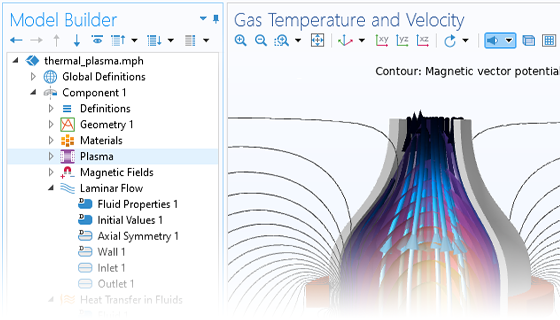
The Plasma interface can be combined with flow and heat transfer interfaces to model background gas flow and heating. You can also simulate the heat transfer in the materials surrounding a plasma. The electrons gain energy from the field and lose it in collisions with the background gas. If the pressure is high enough, this mechanism can lead to important gas and surface heating. The Plasma interface automatically computes the heat source resulting from plasma reactions and makes it available to be used in heat transfer interfaces. Fluid properties like viscosity and density are also computed in the Plasma interface and made available to be used in fluid flow interfaces.
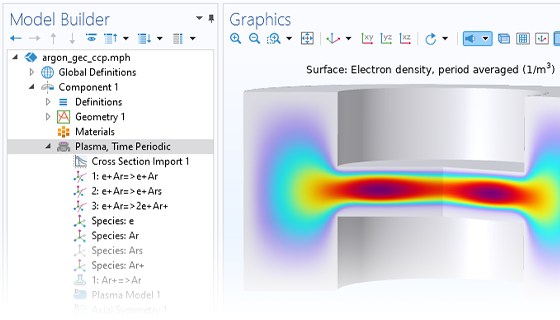
The Plasma Module includes a specialized numerical method for modeling CCP with significantly faster computation times than traditional methods. Instead of solving in the time domain, the periodic steady-state solution is computed by adding an extra dimension to the underlying mathematical equations. This extra dimensional equation represents one RF cycle and enforces periodic boundary conditions. This avoids having to solve for tens or hundreds of thousands of RF cycles, which typically takes a long time before the plasma reaches the periodic steady-state solution. This approach maintains all the nonlinearity of the model while dramatically reducing computation time.
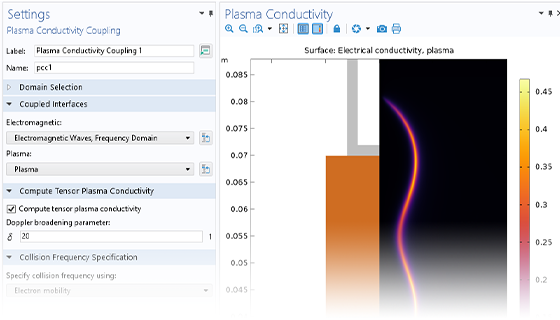
The Microwave Plasma multiphysics interface2 is used to study discharges that are sustained by electromagnetic waves (wave-heated discharge). When you select this interface, a Plasma interface and an Electromagnetic Waves interface are automatically generated, as well as multiphysics couplings. The Plasma Conductivity Coupling feature couples the plasma conductivity to the Electromagnetic Waves interface, and the Electron Heat Source feature couples the resulting electron heating back to the Plasma interface. The electromagnetic waves are solved for in the frequency domain and the plasma is solved for in the time domain.
Every business and every simulation need is different.
In order to fully evaluate whether or not the COMSOL Multiphysics® software will meet your requirements, you need to contact us. By talking to one of our sales representatives, you will get personalized recommendations and fully documented examples to help you get the most out of your evaluation and guide you to choose the best license option to suit your needs.
Just click on the "Contact COMSOL" button, fill in your contact details and any specific comments or questions, and submit. You will receive a response from a sales representative within one business day.
Request a Software Demonstration